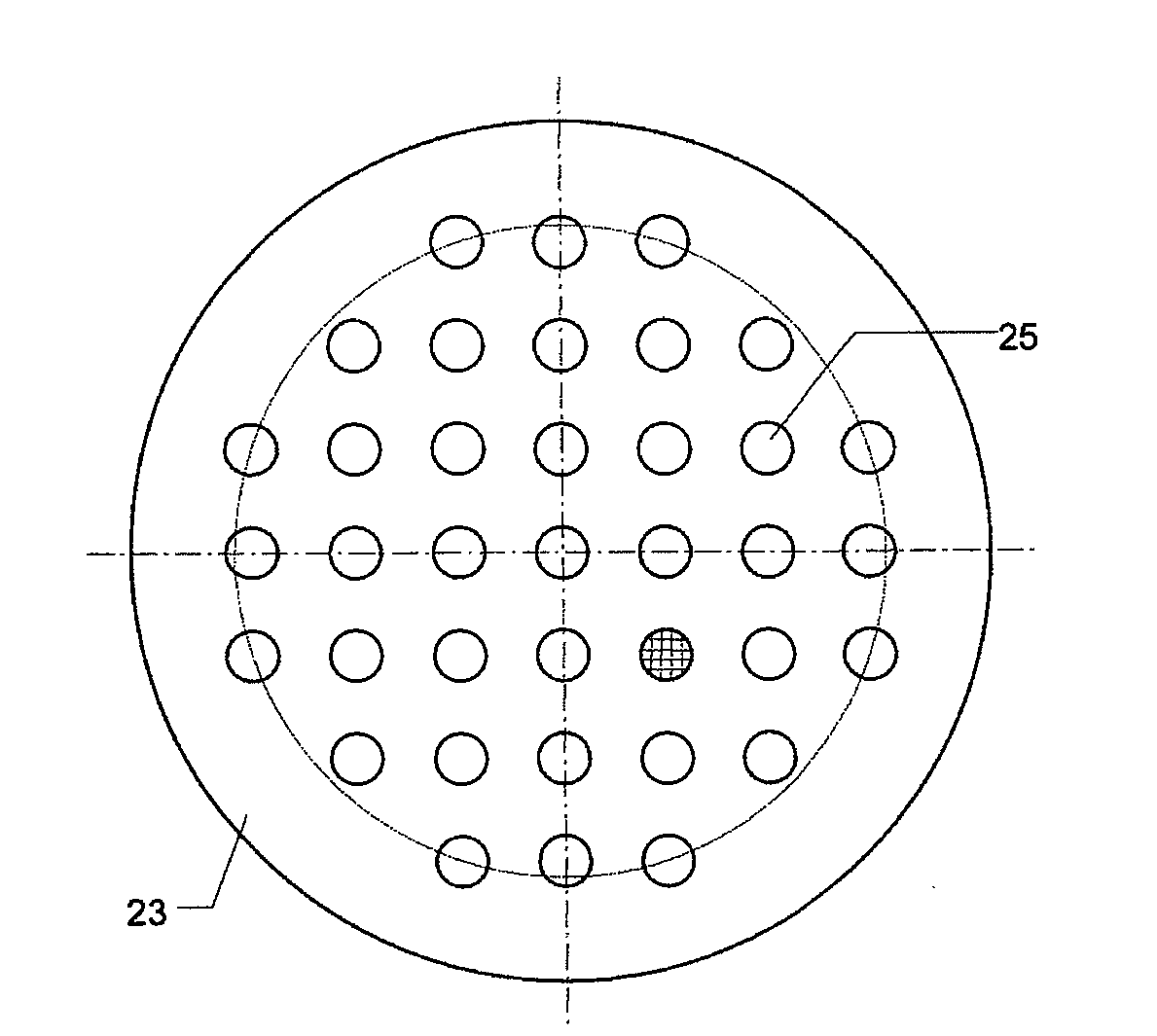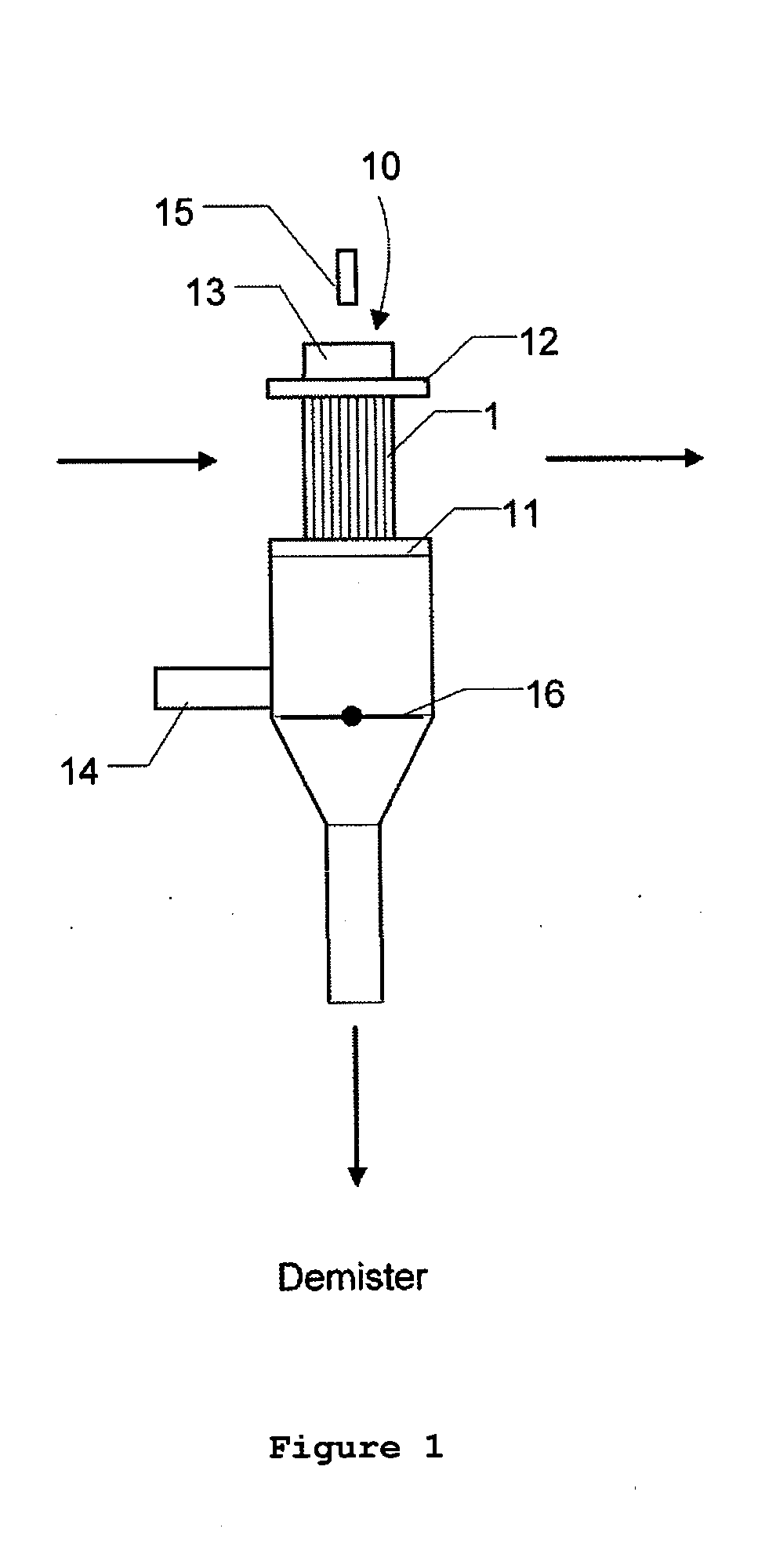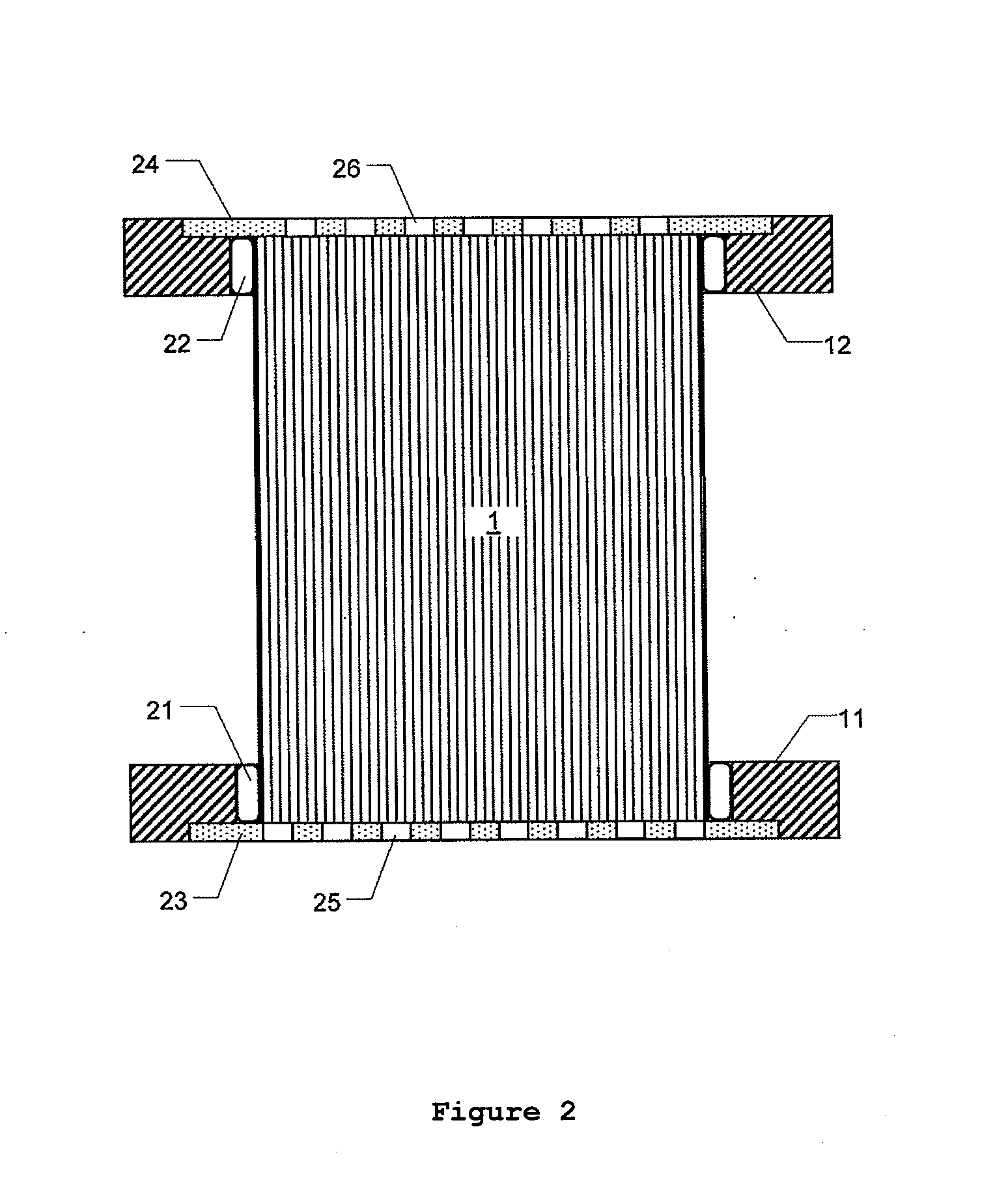Method for introducing a catalytic coating into the pores of a ceramic honeycomb flow body
a technology of ceramic honeycomb and catalytic coating, which is applied in the direction of physical/chemical process catalysts, metal/metal-oxide/metal-hydroxide catalysts, and separation processes, etc., can solve the problems of increasing the amount of catalyst deposited on the honeycomb body to only a small extent, and achieves the effect of increasing the banking-up pressure through the honeycomb body
- Summary
- Abstract
- Description
- Claims
- Application Information
AI Technical Summary
Benefits of technology
Problems solved by technology
Method used
Image
Examples
example
[0053]A further honeycomb body having the same properties as in the comparative example was coated with the catalyst suspension of the comparative example by the process of the invention.
[0054]As perforated mask for the lower end face, use was made of a perforated mask having holes as shown in FIG. 3. The holes (25) had a diameter of 6 mm and were arranged in a square grid having a grid spacing of 12 mm. The diameter of the honeycomb body is indicated by the circle shown as a dotted line. The grid of the flow channels of the honeycomb body is indicated in one hole of the perforated mask. The holes selected for the perforated mask cover about 18 flow channels.
[0055]As perforated mask for the upper end face, use was made of a perforated mask having holes as shown in FIG. 4. The holes of this mask had a diameter of 3 mm.
[0056]After calcination, the honeycomb body was coated with 20% more solids than the honeycomb body of the comparative example. The banking-up pressure of this honeycom...
PUM
| Property | Measurement | Unit |
|---|---|---|
| pore diameter | aaaaa | aaaaa |
| porosity | aaaaa | aaaaa |
| particle size d50 | aaaaa | aaaaa |
Abstract
Description
Claims
Application Information
 Login to View More
Login to View More - R&D
- Intellectual Property
- Life Sciences
- Materials
- Tech Scout
- Unparalleled Data Quality
- Higher Quality Content
- 60% Fewer Hallucinations
Browse by: Latest US Patents, China's latest patents, Technical Efficacy Thesaurus, Application Domain, Technology Topic, Popular Technical Reports.
© 2025 PatSnap. All rights reserved.Legal|Privacy policy|Modern Slavery Act Transparency Statement|Sitemap|About US| Contact US: help@patsnap.com



